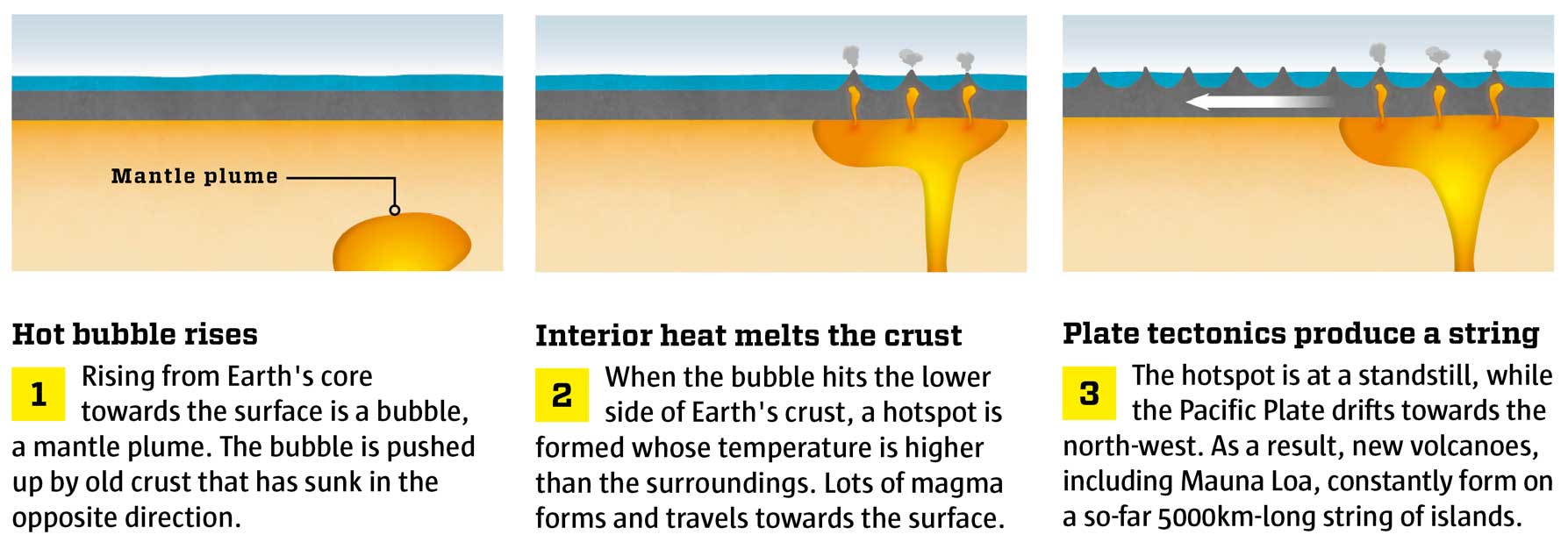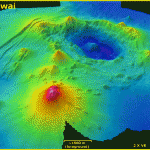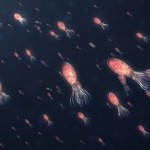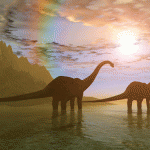
Mauna Loa in Hawaii is the world’s largest active volcano, and its 2022 eruption was the volcano’s 34th since 1843. But why is such a giant volcano located in the middle of the Pacific Ocean, far away from everything?
In a nutshell, this area is the place on Earth where the most magma per square kilometre reaches Earth’s surface. All of the Hawaiian Islands – eight major islands and many smaller ones – were formed by volcanoes.
Mauna Loa measures 17km from its base under the ocean to the ridge of the crater at its summit. Like the other Hawaiian volcanoes, Mauna Loa was formed due to what geologists call a hotspot — an area under Earth’s crust where a lot of magma is formed. As a result, extra large volcanoes form above the hotspots.
The Hawaiian volcanoes are shield volcanoes – wide and relatively flat volcanoes made up of basaltic magma. Nearly all the ocean floor is made up of basaltic magma, which flows far and easily at speeds of up to 16km/h. This results in volcanoes that look like a knight’s shield facing upwards. There is little slope on the sides of the volcano, so a tall shield volcano can covers a huge area. The largest island, Hawaii, or the Big Island, was formed by five overlapping shield volcanoes; it covers an area of around 10,430km².
Observed from above, the Hawaiian Islands are located on a line. This is because the hotspot is constantly forming new volcanoes south-east of the old ones. However, it is not the hotspot that is moving — rather it is the Pacific tectonic plate that is moving to the north-west, while the hotspot sits below Earth’s crust at a standstill.
In 1971, this led geophysicist Jason W. Morgan to introduce a revolutionary theory about mantle plumes. A mantle plume is a bubble of particularly hot material that rises up from Earth’s core in a particular place. As well as the one that is probably located under Hawaii, geologists believe that the Yellowstone supervolcano in the US is also atop a mantle plume which is ‘moving’ under its plate.







